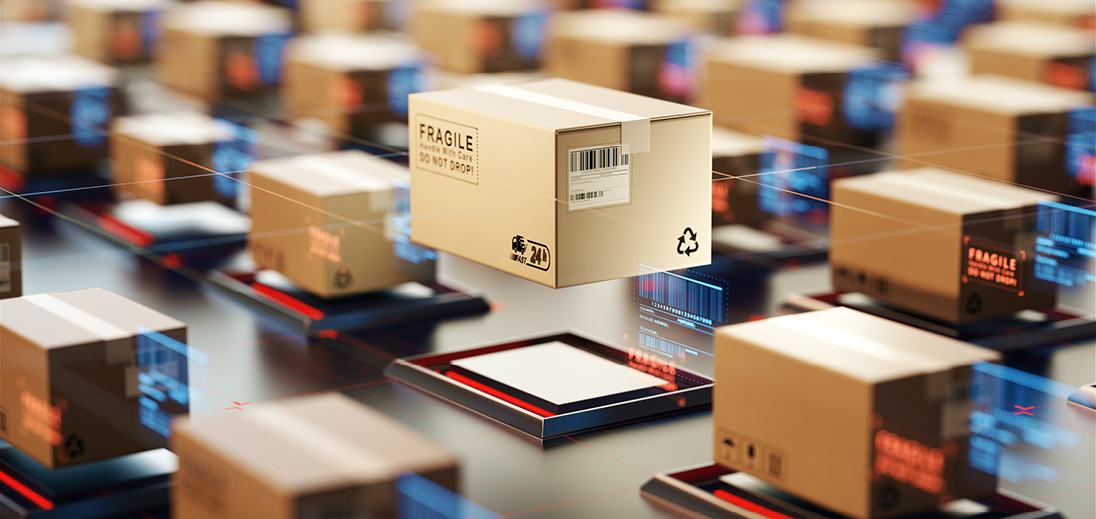Is artificial intelligence revolutionizing the packaging industry?
Yes! The packaging industry faces several challenges in improving efficiency, performance, and sustainability. Among other innovations, Artificial Intelligence (AI) can help meet these challenges by improving resource efficiency, designing eco-responsible packaging, connecting packaging to customers, optimising logistics and traceability, and enhancing recycling and compostability.
Yes! The packaging industry faces several challenges in improving efficiency, performance, and sustainability. Among other innovations, Artificial Intelligence (AI) can help meet these challenges by improving resource efficiency, designing eco-responsible packaging, connecting packaging to customers, optimising logistics and traceability, and enhancing recycling and compostability.
Artificial intelligence is improving resource efficiency
AI can enhance the efficiency of resources used in packaging manufacture and transportation by optimising production processes. It can analyse data from various production stages to identify inefficiencies and suggest improvements. For instance, machine learning algorithms can optimise machine settings to minimise material waste during the manufacturing of packaging materials such as cardboard, plastic, or metal.
By fostering connectivity not only within the production environment but also across the entire supply chain, these technologies support data-driven decision-making, aiding food, and beverage manufacturers in improving productivity, food safety, quality, and production flexibility.
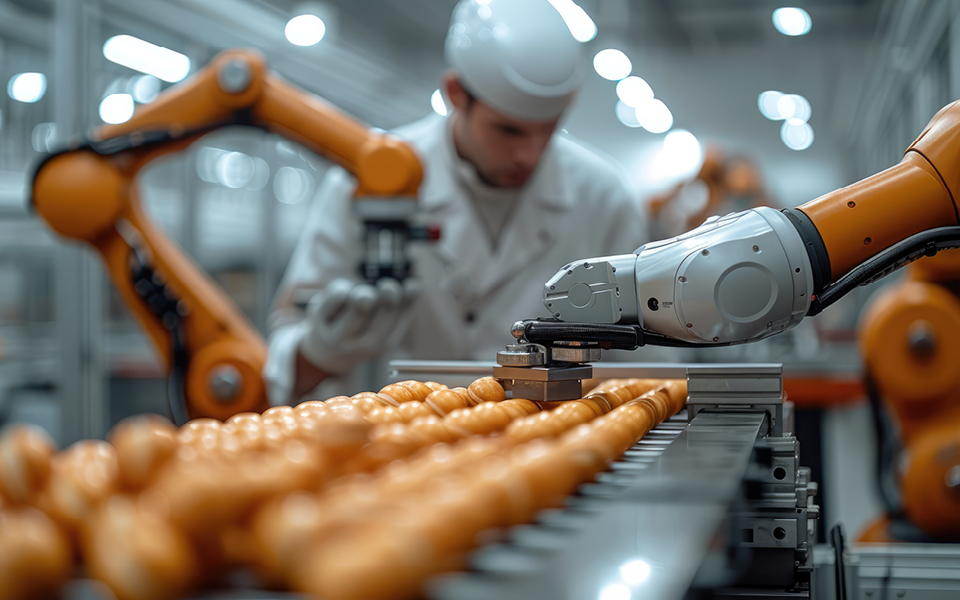
Cobots are robots that work in direct collaboration with humans, programmed using artificial intelligence.
A German-based company ZF¹, an automotive supplier, encountered the challenge of balancing flexibility and precision while automating the workpiece feed of a high-volume milling station where gears are manufactured.
ZF employed an AI controller and a collaborative robot (cobot) within an automated workpiece fixture. The cobot positions itself over the rings in the crate using its own controller. Subsequently, the system assumes control, autonomously moving the robot to the next ring to position the gripper accurately in three dimensions. The robot then regains control, retrieves the ring, and transfers it to the conveyor belt for placement.
Artificial intelligence is helping design more sustainable packaging
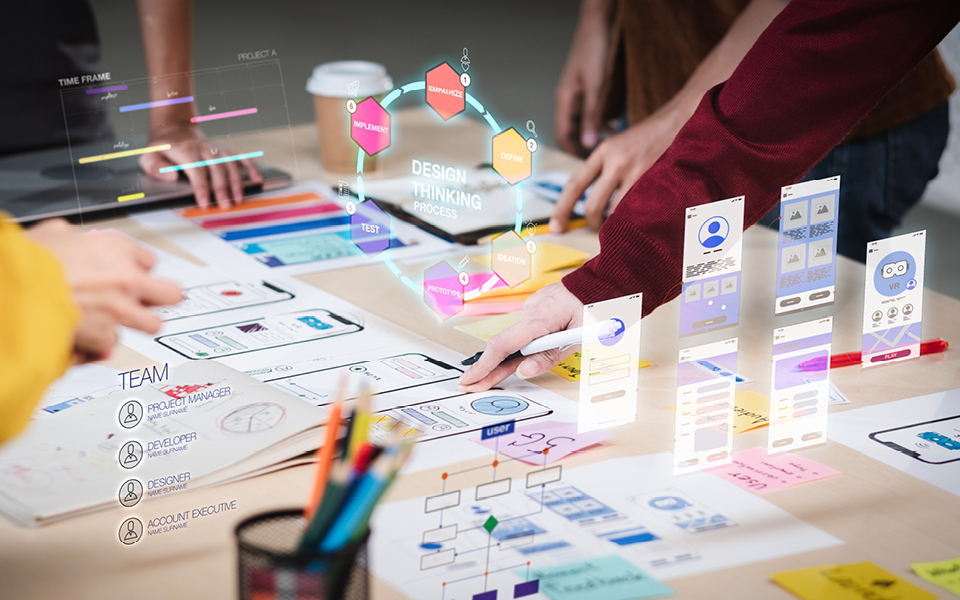
AI-driven design tools can optimise packaging materials for recyclability by analysing factors such as material composition, shape, and labelling. These tools aid designers in creating packaging that is easier to separate and process in recycling facilities, thus increasing the likelihood of successful recycling, and reducing the amount of packaging waste sent to landfills.
AI can also assist in the development of compostable packaging by simulating decomposition processes and predicting the environmental impact of different materials. By identifying biodegradable materials that can safely break down into organic matter, AI algorithms enable the creation of packaging that can be composted along with organic waste, contributing to a circular economy, and reducing dependence on fossil-based materials. These examples illustrate how AI technologies can be leveraged to design packaging solutions that are not only more sustainable but also more efficient and cost-effective, contributing to the goal of reducing the environmental footprint of packaging production and consumption.
Artificial intelligence is improving recycling and compostability
AI technologies enhance the recycling and compostability of packaging materials by enabling more efficient sorting, enhancing quality control processes, optimising composting operations, and guiding the design of more sustainable packaging solutions. These advancements, exemplified by initiatives such as the Perfect Sorting Consortium², contribute to increased recycling rates, improved recyclates’ quality, and enhanced sustainability across the packaging lifecycle.
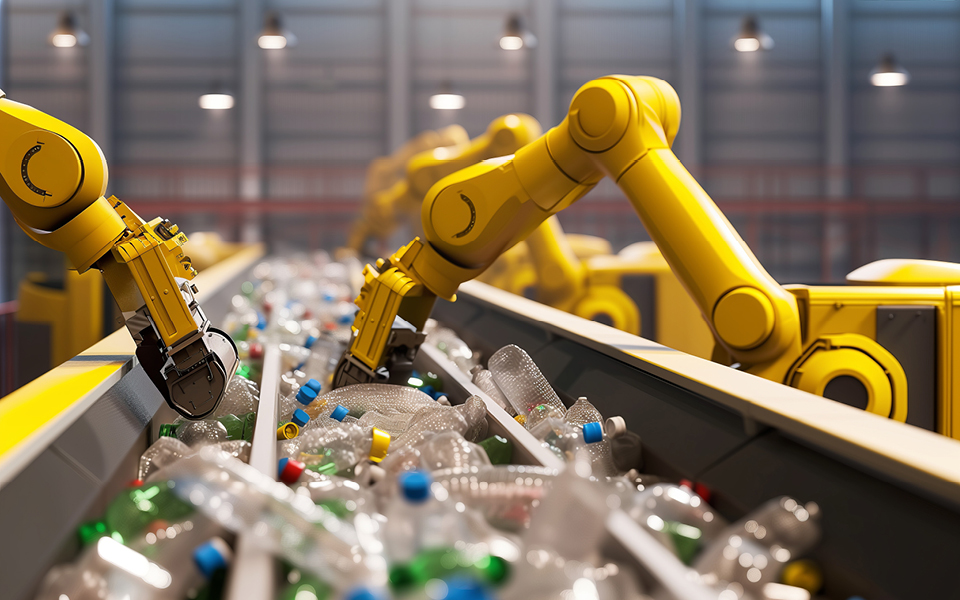
Artificial intelligence pilots the robotic arms to sort the waste.
PepsiCo³ and eight other brands, including Nestle and P&G, have joined the newly launched Perfect Sorting Consortium with the aim of improving packaging waste sorting using artificial intelligence. The National Test Centre Circular Plastics (NL) will test a wide range of packaging products provided by brand-owners using an AI decision model to support packaging waste sorting, complementing existing technologies.
By detecting and sorting products based on multiple attributes such as color, application, shape, or material, this AI decision model could enhance packaging waste sorting and recycling rates, as well as the quality of the recyclate. Ultimately, the partners aim to successfully test the AI decision model in an industrial sorting plant by the end of the two-year project.
Artificial intelligence is optimising logistics
AI can dynamically adjust delivery routes in real-time based on data and historical traffic patterns, avoiding congestion and minimising travel time, thereby reducing fuel consumption and transportation costs. It can also optimise the loading of packaging materials and products onto vehicles to maximise space utilisation and minimise the number of trips required.
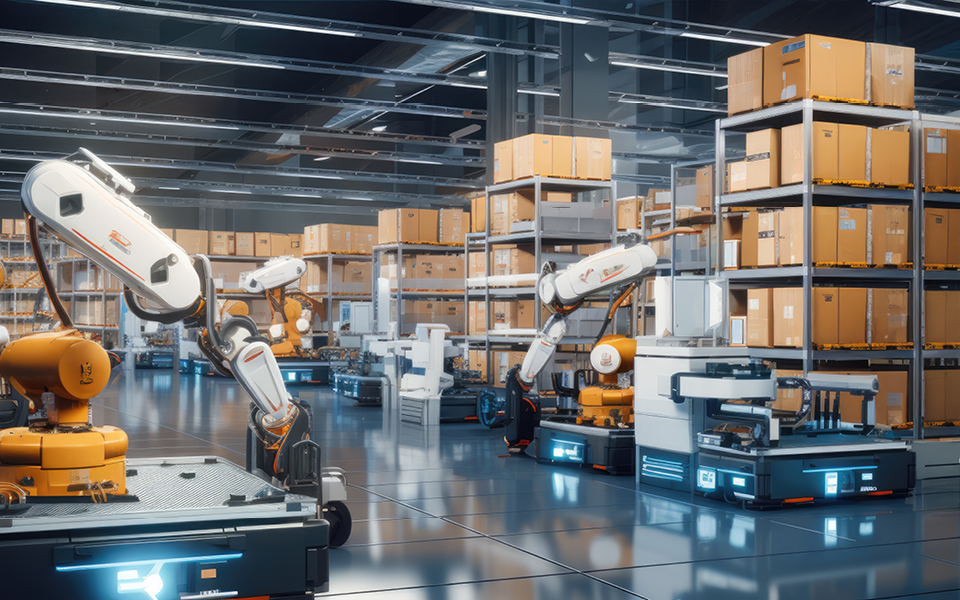
By considering factors such as size, weight, and stacking requirements, AI algorithms can determine the most efficient arrangement of goods within trucks or containers, reducing shipment volume and decreasing transportation-related emissions. For example, UPS⁴ uses Artificial Intelligence to optimize delivery routes through its fleet system called ORION (On-road Integrated Optimization and Navigation). This is in response to increased package volume, delivery complexity, margin pressure, cost-cutting needs, driver recruitment and retention challenges, and environmental concerns.
The advanced algorithms of ORION create optimal routes for delivery drivers using data supplied by customers, drivers, and vehicles, adjusting routes based on changing weather conditions or accidents. The cost, time savings, and emission reductions resulting from this optimization are significant. UPS expects to reduce delivery miles by 100 million.
Artificial intelligence is connecting packaging to customers
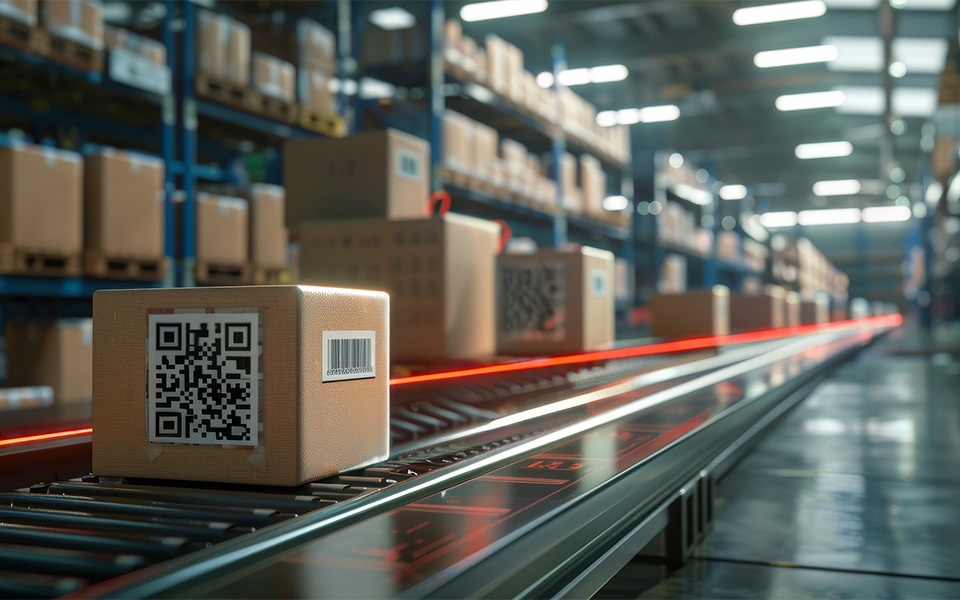
Artificial intelligence is revolutionising the way we interact with and manage packaging, offering innovative solutions that not only enhance consumer engagement but also promote sustainability in waste management. Through the development of connected digital packaging and the integration of AI in tracking and recycling processes, AI is setting a new standard in the packaging industry.
Emerging technologies, such as connected digital packaging, present new opportunities for brands to engage with their customers more interactively and informatively. A notable example of this innovation is Tetra Pak's⁵ initiative, where intelligent and interactive packaging experiments on cartons for a major European fruit juice producer have been introduced. Each pack features a QR code that, when scanned, connects the customer to an interactive personality test, revealing the fruit juice that best matches their preferences or suggesting new cocktail recipes. Developed in collaboration with Appetite Creative and the AIPIA intelligent packaging association, this approach exemplifies how connected packaging can significantly enhance consumer engagement and offer valuable insights for producers.
Artificial intelligence is tracking packaging
Simultaneously, AI plays a crucial role in ensuring the appropriate recycling or composting of packaging. By equipping packaging materials with RFID tags, which contain unique identifiers, AI algorithms can monitor the lifecycle of these materials from manufacturing to disposal.
This technology enables the tracking of packaging through various stages of the supply chain, ensuring that they are recycled or composted appropriately at the end of their life cycle. The use of barcode or QR code information for tracking the journey of packaging from production to disposal further underscores AI's capability to verify correct processing at recycling or composting facilities, thereby facilitating the diversion of materials from landfills to appropriate waste management streams.
Furthermore, the integration of AI with blockchain technology enhances transparency and accountability within the supply chain. This combination creates immutable records of packaging movements and transformations, ensuring the effective application of social and environmental standards across global supply chains. Circulor⁶ specialises in providing solutions that make supply chains traceable, ethical, and sustainable, aiding industries such as electric vehicles, extractive industries, and plastics recycling in achieving transparency and compliance with environmental and ethical standards. With the global blockchain market expected to grow significantly, the potential for advancements in this technology to further improve packaging sustainability is immense.
Through these innovations, AI is bridging the gap between consumer engagement and sustainable packaging solutions, demonstrating its pivotal role in transforming the packaging industry. By leveraging AI for both enhancing customer experiences through connected packaging and ensuring the ethical recycling and composting of packaging materials, the industry is taking significant strides towards sustainability and environmental responsibility.
Conclusion: Can AI Drive Packaging into the Future?
In conclusion, AI has emerged as an indispensable tool in the packaging sector, offering efficiencies and sustainability benefits throughout the packaging lifecycle.
Yet, as we embrace these advancements, it prompts us to ponder: What new opportunities and challenges might arise from further integration of AI in packaging? How can we ensure that these technologies are deployed responsibly and ethically?
By continuing to innovate and collaborate, we are paving the way for a future where AI-based solutions will play an essential role in packaging design and production, but also in the expansion of sustainable practices.
Sources:
1- German company:
https://www.controleng.com/articles/software-improves-ai-automation-flexibility/
2- The perfect Sorting Consortium:
https://packagingeurope.com/news/new-consortium-to-develop-artificial-intelligence-model-for-packaging-waste-sorting/8057.article
https://ntcp.nl/perfect-sorting-consortium-assessing-the-future-of-packaging-waste-sorting-nl
3- PepsiCo:
https://www.pepsico.com/our-impact/esg-topics-a-z/packaging
https://www.packagingnews.co.uk/news/waste-management/pepsico-nestle-pg-join-project-use-ai-pack-waste-sorting-31-03-2022
4- UPS:
https://www.forbes.com/sites/bernardmarr/2018/06/15/the-brilliant-ways-ups-uses-artificial-intelligence-machine-learning-and-big-data/?sh=102893755e6d
https://www.marketingaiinstitute.com/blog/how-ups-uses-artificial-intelligence-to-save-200-million-per-year
https://www.ups.com/assets/resources/media/knowledge-center/UPS_Routes-to-the-Future-Vol1.pdf
5- Tetra Pak:
https://www.letc.news/tetra-pak-se-lance-dans-les-emballages-intelligents-et-connectes
https://www.tetrapak.com/fr-fr/about-tetra-pak/stories/connectivity-creates-opportunities-food-manufacturers
6- Circulor:
https://www.circulor.com/
https://originstamp.com/blog/blockchain-adoption-for-provenance-traceability/







